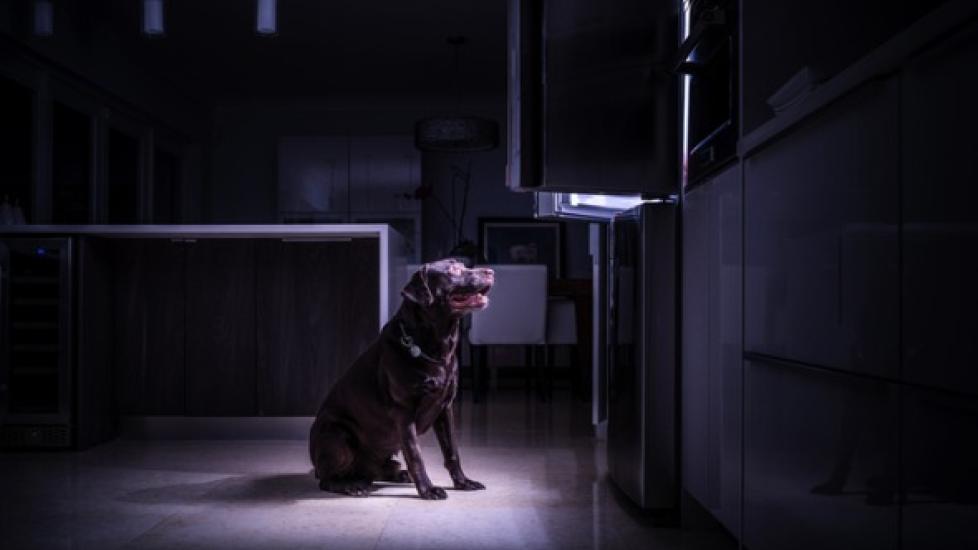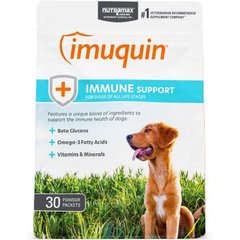Can Dogs See in the Dark?
Anatomically and functionally speaking, human eyes and dog eyes are very similar—although dogs have several advantages that allow them to see better at night. While we often fumble around in the dark to turn on a lamp, dogs are able to get around in the dark much better.
Here’s a brief overview of the anatomical structure of the canine eye and some insight on how a dog’s eyes are ultimately designed to see better at night.
Do Dogs Have Night Vision?
Yes, dogs can see in the dark, but not in the way that you could see if you used night vision goggles. More studies are needed as there is still much to learn about how a dog “sees” and interprets the world around them.
Vet Recommended Health Support
- Nutramax Imuquin Immune Support Powder Immune Supplement for Dogs, 30 count$24.99Chewy Price
- Purina Pro Plan Veterinary Diets FortiFlora Powder Probiotic Digestive Supplement for Dogs, 30 count$30.99Chewy Price
- Purina Pro Plan Adult Sensitive Skin & Stomach Salmon & Rice Formula Dry Dog Food, 16-lb bag$54.48Chewy Price
- Virbac Epi-Otic Advanced Ear Cleaner for Dogs & Cats, 4-fl oz bottle$13.19Chewy Price
Do Dogs See Better Than Humans at Night?
Dogs’ eyes are built very much like ours, with many of the same features. They do have some disadvantages in terms of vision, such as seeing fewer colors, less depth perception, less visual acuity to determine finer details, and less visual perspective because they are lower to the ground.
However, when it comes to seeing in the dark, dogs have a few anatomical differences that make them better suited to see, survive, and hunt at night.
Dog Eye Anatomy
A dog’s eye is made up of the outer cornea, the middle iris, pupil and lens, and the inner retina.
The cornea serves as a transparent shield that focuses and transmits light through the pupil (controlled by the colored iris) to the lens, which fine-tunes or focuses the image further, and then onto the retina. On the retina, light is converted into electrical signals and sent to the brain (visual cortex) via the optic nerve.
The retina contains specialized photoreceptor cells called rods and cones. Rods and cones enable a dog (or you and I) to convert light into nerve signals that are ultimately responsible for vision.
Rods function better in dim lighting and help detect motion and shapes, whereas cones function better in bright light, having a greater sensitivity for detecting colors as well as overall sharpness and clarity.
Nocturnal Vision Advantages for Dogs
Dog's have a few natural advantages over humans when it comes to seeing in the dark, including:
-
Tapetum lucidum: The tapetum lucidum is the reflective tissue beneath the retina. It’s found in most mammals and causes the eye sheen seen in pictures or at night. It serves as a mirror to reflect light onto the retina, thereby enabling dogs to use less light because they use it more efficiently.
-
Rod-dominated retina: Most domestic mammals, including dogs, have retinas that are rod-dominated, meaning the majority of their photoreceptor cells are geared toward seeing at night rather than in the day. Detecting motion and shapes is also enhanced. Wolves most likely have even greater nocturnal vision, as their retinas incorporate a greater ratio of rod-processing cells.
-
Larger pupil size: Dogs have much larger pupils than humans. The pupil dilates and constricts to control the amount of light entering the eye. The larger the pupil, the more light that enters the eye, and thus the greater potential for vision.
In addition to these anatomical advantages, a dog’s ability to detect motion at greater distances is far superior to ours, and this most likely holds true even in dim light. A study that involved police dogs found that the most sensitive dogs could recognize a moving object as far away as 900 meters. When that same object was stationary, they could only detect it at a distance of 585 meters or less.
This would explain why dogs are better at playing tag than they are at hide and seek!
Do Dogs Need a Light on at Night?
Keep in mind that even with these advantages, dogs still require some light in order to see, since that’s what stimulates the photoreceptor cells. While they can still get around better than humans in total darkness due to their other senses, they will not be able to see. Although it’s rare to have complete darkness, it’s helpful to turn on a nightlight so your dog can see better at night.
Can Dogs See Better Than Cats at Night?
Cats are adept at nocturnal vision and can see even better in the dark than dogs. They are much more sensitive to light, and their tapetum lucidum reflects a significantly greater amount of light. Cats also have a vertical-slit pupil that not only protects the retina in bright light but also allows more light to enter the eye in the first place.
Can Dogs See Glow-in-the-Dark Objects?
It’s most likely that dogs can see glow-in-the-dark objects and toys, although the phosphorescence may come across as a different color or hue depending on the wavelength.
References
- Maggs DJ, Miller PE, Ofri R. Slatter’s Fundamentals of Veterinary Ophthalmology. Elsevier; 2018.
Featured image: iStock.com/THEPALMER




